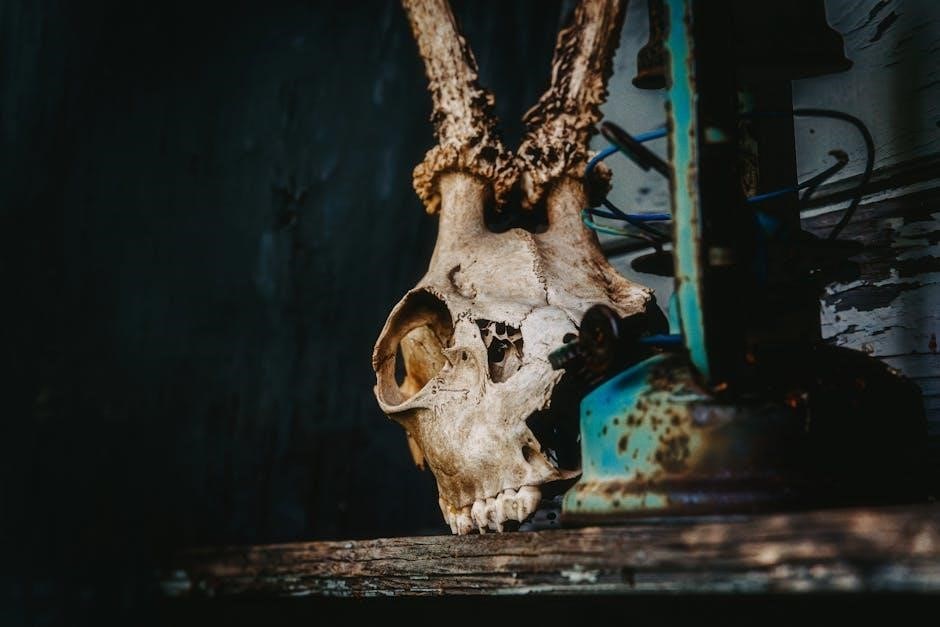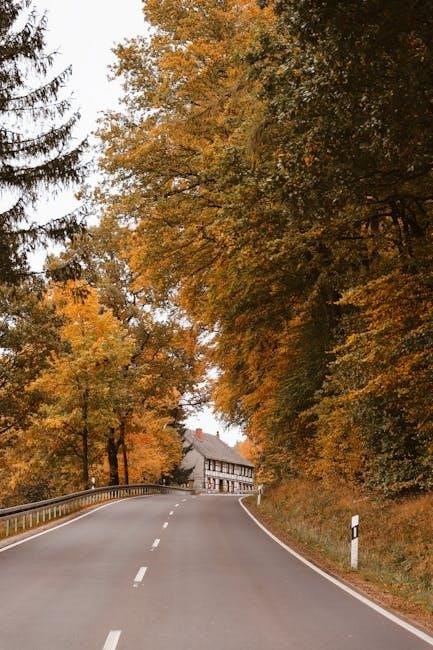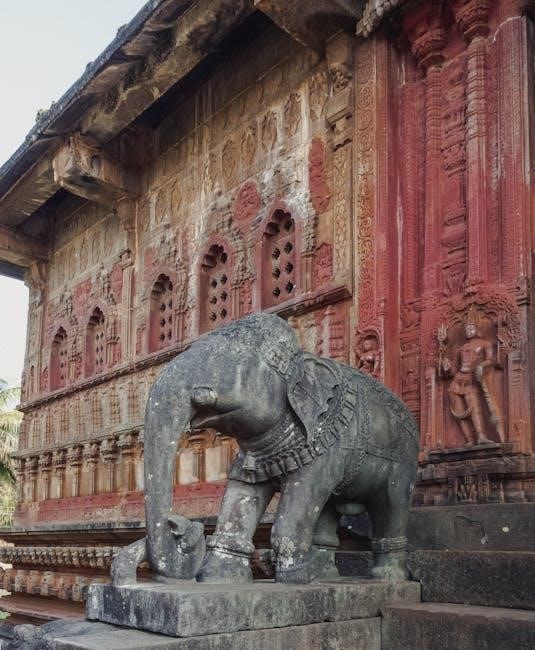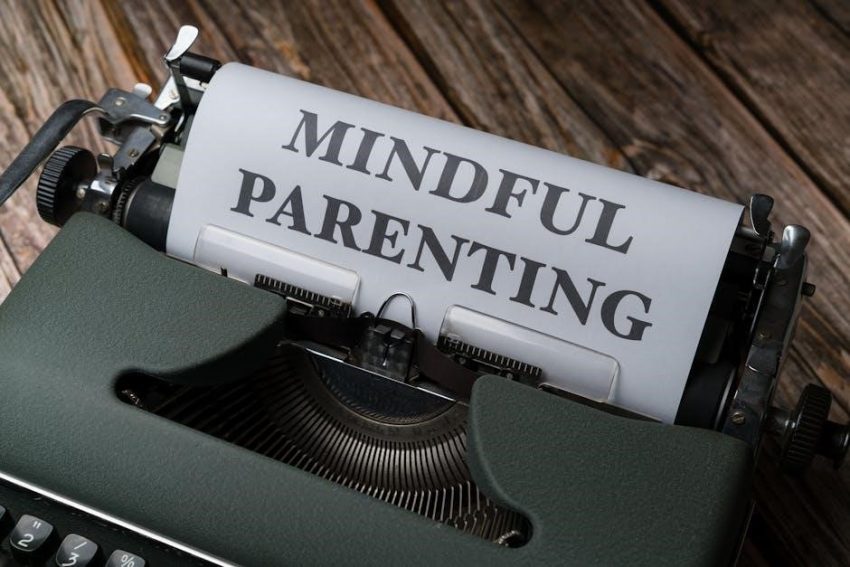Antique hunting is a thrilling adventure‚ offering a unique connection to history․ It combines discovery‚ bargaining‚ and the joy of uncovering hidden gems‚ guided by expert tips and flea market finds․
What is Antique Hunting?
Antique hunting is the exciting pursuit of discovering rare and valuable items from the past‚ often found at flea markets‚ estate sales‚ or auctions․ It involves a mix of detective work‚ negotiation‚ and luck‚ as hunters search for unique pieces with historical significance․ Whether it’s furniture‚ collectibles‚ or vintage artifacts‚ the thrill lies in the hunt and the stories behind each find․ This hobby requires patience‚ knowledge‚ and a keen eye for detail‚ making it a rewarding adventure for both collectors and enthusiasts․ The journey often leads to unexpected treasures‚ blending history‚ strategy‚ and personal satisfaction․
Why Antique Hunting is Popular
Antique hunting captivates people due to its unique blend of history‚ adventure‚ and personal satisfaction․ It offers a chance to connect with the past‚ uncovering stories behind vintage items․ Many enjoy the thrill of the hunt‚ whether at flea markets‚ estate sales‚ or auctions․ The possibility of discovering undervalued treasures adds excitement‚ while the process of bargaining and negotiating prices appeals to those who enjoy a challenge․ Additionally‚ antique hunting fosters a sense of sustainability by giving old items new life․ For collectors‚ it’s a way to build meaningful collections‚ and for casual hunters‚ it’s a fun‚ rewarding hobby that combines curiosity and creativity․
Basic Tips for Beginners
Starting your antique hunting journey? Begin by researching common items and their values to avoid overpaying․ Set a budget and stick to it‚ as temptations can arise․ Inspect items carefully for signs of authenticity‚ such as patina or craftsmanship․ Don’t hesitate to ask sellers questions or request provenance․ Consider starting with smaller‚ more affordable pieces to build confidence․ Learn basic negotiation techniques‚ as many sellers expect haggling․ Carry a small notebook to record details of items you find․ Lastly‚ join online communities or local groups to gain insights and stay updated on trends․ Patience and persistence are key to finding true treasures․

Research and Preparation
Studying market trends‚ vintage guides‚ and antique charts is crucial․ Dedicate time to analyze patterns and identify authentic pieces‚ ensuring informed decisions during hunts․
Understanding Antique Furniture
Antique furniture offers a glimpse into history‚ reflecting craftsmanship and design from past eras․ Pieces often showcase high-quality materials like walnut or oak‚ crafted with precision․ Popular styles include Victorian‚ Art Deco‚ and Mid-Century Modern‚ each with distinct characteristics․ Understanding the era‚ material‚ and construction helps identify authentic pieces․ Regional influences‚ such as French or American designs‚ also play a role․ Studying these elements aids in recognizing genuine antiques and appreciating their value․ Whether for collection or home decor‚ knowing the story behind the furniture enhances its appeal and ensures informed purchases during hunts․
Identifying Authentic Pieces
Identifying authentic antique furniture involves examining craftsmanship‚ materials‚ and historical context․ Look for natural patina‚ hand-carved details‚ and period-specific hardware․ Genuine antiques often show signs of aging‚ such as wear patterns and repairs․ Study the construction techniques‚ like dovetail joints‚ common in earlier pieces․ Materials like solid woods or metals can indicate authenticity․ Provenance‚ such as documentation or maker’s marks‚ adds credibility․ Be cautious of overly restored or replicated items‚ which may lack original charm․ Consulting experts or appraisers can help verify authenticity․ Learning to distinguish genuine antiques from reproductions is key to successful hunting and building a valuable collection․
Essential Tools for Antique Hunters
Antique hunting requires the right tools to ensure success․ A magnifying glass helps examine intricate details and authenticity․ A flashlight is crucial for spotting flaws in dark areas․ Gloves protect delicate surfaces while handling․ A measuring tape and notebook are handy for documenting dimensions and notes․ Reference guides or apps provide insights into periods‚ styles‚ and values․ A portable UV light can detect repairs or modern materials․ Carry a small toolkit for minor inspections․ Knowledge of historical context and maker’s marks is equally vital․ These tools empower hunters to make informed decisions and uncover hidden treasures effectively‚ whether at flea markets‚ auctions‚ or estate sales․
Where to Find Antiques
Antique hunters explore flea markets‚ estate sales‚ auctions‚ and online marketplaces to discover vintage treasures‚ rare collectibles‚ and unique historical items․ Each location offers distinct opportunities for finds․
Flea Markets and Antique Shows
Flea markets and antique shows are vibrant hubs for discovering unique treasures․ These events offer a wide variety of items‚ from vintage furniture to rare collectibles‚ attracting both seasoned collectors and casual shoppers․ Often held outdoors or in large indoor spaces‚ flea markets provide a dynamic atmosphere where bargaining is part of the experience․ Antique shows‚ while similar‚ tend to feature more curated selections and higher-end pieces․ Both settings allow enthusiasts to connect with sellers who share stories about the items‚ adding depth to the hunting experience․ They remain essential destinations for anyone seeking to uncover hidden gems and expand their collections․
Online Marketplaces
Online marketplaces have transformed antique hunting‚ offering unparalleled convenience and accessibility․ Platforms like eBay‚ Etsy‚ and specialized antique sites provide vast inventories with high-quality images and detailed descriptions․ Shoppers can browse globally‚ filtering by era‚ category‚ and price․ Many sites feature seller ratings and customer reviews‚ enhancing trust․ Additionally‚ online marketplaces often include price guides and historical information‚ aiding collectors in making informed decisions; While in-person inspection is impossible‚ thorough descriptions and return policies mitigate risks․ For those who enjoy the thrill of the hunt from home‚ online marketplaces are indispensable‚ connecting buyers with rare and unique items worldwide․
Estate Sales and Auctions
Estate sales and auctions are goldmines for antique hunters‚ offering rare and unique items often at competitive prices․ Estate sales typically include entire collections‚ allowing hunters to discover hidden gems in one place․ Auctions‚ both in-person and online‚ create an exciting environment where bidding can uncover unexpected treasures․ To succeed‚ research the seller or auction house‚ set a budget‚ and arrive early to inspect items․ Auction previews are crucial for assessing condition and authenticity․ Knowing market values and bidding strategies can help secure great deals․ Estate sales and auctions provide thrilling opportunities for collectors to acquire high-quality antiques‚ making them indispensable in the hunt․

Negotiation and Pricing

Negotiation and pricing are key strategies in antique hunting․ Knowing market values‚ inspecting condition‚ and setting budgets empower hunters to bargain effectively‚ securing great deals․
How to Negotiate Effectively
Negotiation is an art that requires preparation and tact․ Start by researching market values to understand fair pricing․ Inspect items for flaws or repairs to use as bargaining points․ Always begin with a lower offer than your maximum budget‚ leaving room to compromise․ Be polite and respectful‚ building rapport with sellers to create a positive atmosphere․ Consider alternative payment methods or bundling purchases to secure better deals․ Know when to walk away if the price isn’t right‚ signaling confidence in your limits․ Effective negotiation balances persistence with respect‚ ensuring both parties feel satisfied with the final agreement․
Understanding Antique Pricing
Antique pricing is influenced by factors like rarity‚ condition‚ age‚ and historical significance․ Researching similar items and market trends helps determine fair value; Condition plays a crucial role—flawless pieces command higher prices․ Provenance‚ or an item’s ownership history‚ can significantly increase its worth․ Demand also drives pricing‚ with certain styles or eras being more sought after․ Understanding these dynamics is key to making informed purchases․ Always compare prices across multiple sources to identify fair deals․ Consulting experts or appraisers can provide insights into an item’s true value․ Pricing variability exists‚ so patience and thorough research are essential for successful antique hunting․

Restoration and Maintenance
Restoring antique furniture requires careful preservation of historical value while adapting pieces for modern use․ Regular maintenance ensures longevity‚ protecting investments and maintaining functionality․
DIY Restoration Tips
Restoring antiques can be a rewarding DIY project‚ but it requires patience and care․ Start by gently cleaning surfaces with soft cloths and mild detergents to avoid damaging finishes․ For furniture‚ consider reupholstering or refinishing to restore its original charm․ Avoid using harsh chemicals or abrasive materials that might strip away historical value․ Small repairs‚ like tightening joints or replacing hardware‚ can significantly enhance functionality․ For delicate items‚ use wax to preserve finishes without altering their patina․ Always research the piece’s history to ensure your methods align with its era․ Remember‚ some tasks may require professional expertise to maintain authenticity and value․
Professional Restoration Services
For intricate or delicate antiques‚ professional restoration services are essential․ Skilled artisans use specialized techniques and materials to preserve historical integrity while enhancing functionality․ Experts in furniture refinishing‚ upholstery‚ and metalwork ensure pieces regain their original elegance․ They often rely on traditional methods passed down through generations‚ ensuring authenticity․ Professional restorers also handle complex repairs‚ such as reattaching loose joints or reconstructing missing parts․ Their deep understanding of historical styles and materials guarantees a flawless finish․ Investing in professional restoration not only maintains the item’s value but also ensures it remains a cherished possession for years to come․ Their expertise is invaluable for preserving rare and irreplaceable antiques․
Collecting Strategies
Collecting antiques involves strategic planning‚ focusing on specific styles or eras to build a cohesive collection․ Specializing in a niche enhances both value and personal satisfaction․
Building a Collection
Building a collection requires patience‚ focus‚ and a clear vision․ Start small‚ setting specific goals based on your interests or the era you admire․ Research is key to identifying rare or unique pieces that align with your theme․ Consider diversifying your collection by acquiring items from various periods or styles to add depth․ Estate sales‚ flea markets‚ and auctions are excellent sources for finding hidden gems․ When adding to your collection‚ ensure each piece tells a story or holds historical significance․ Over time‚ your collection will become a reflection of your passion and dedication‚ offering both personal satisfaction and potential value appreciation․
Specializing in a Niche
Specializing in a niche allows collectors to deepen their expertise and stand out․ Focus on areas like Depression glass‚ vintage firearms‚ or mid-century modern furniture․ This targeted approach helps build a cohesive collection and increases its value over time․ By concentrating on a specific category‚ you gain knowledge of rare pieces‚ making it easier to spot authentic items․ Resources like antique guides‚ estate sales‚ and auctions can aid in finding niche items․ Becoming a specialist also enhances your reputation among dealers and fellow collectors‚ making you a go-to authority in your chosen field․ This focus not only simplifies the hunt but also elevates the joy of collecting․
Antique hunting is a rewarding blend of history‚ strategy‚ and personal connection․ Whether you’re a seasoned collector or a curious beginner‚ the thrill lies in the journey of discovery․ From flea markets to estate sales‚ each find tells a story and adds character to your collection․ Specializing in a niche or building a diverse portfolio‚ the satisfaction comes from the hunt itself․ As you grow in expertise‚ remember that antiques are not just objects but windows to the past․ Embrace the process‚ enjoy the chase‚ and let the joy of the hunt guide you in creating a legacy of timeless treasures․

